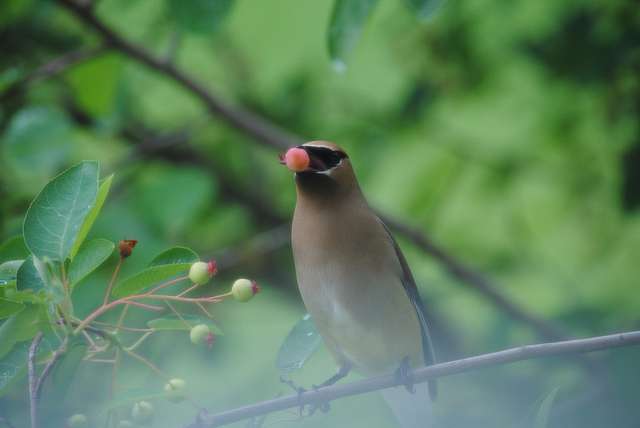Berry cool
I always look forward to this time of year because the fruit of various woody plants are becoming ripe and the birds are flocking to them to gobble up these little packets of dietary goodness. Yesterday, I was sitting in one of my many living rooms chatting it up with the help, and the serviceberry (Amelanchier canadensis) outside the window had a number of young robins in it plucking off the ripe and partially ripe berries. At least 33 species of songbirds eat the fruit from this tree as do a number of mammals. It is interesting to note, at least to phenologists, that the first fruits of summer ripen at about the time that young birds are fledging. Coincidence? I think not. By the time you read this, dear readers, the fruit of the serviceberry and mulberry (Morus sp.) will sadly have all been eaten within my palatial compound and presumably in the Twin Cities area as well.
Not to worry. There is a progression of ripening fruit through the summer and into the fall that animals of all types utilize to obtain energy for migration, hibernation or to have energy for the long winter ahead. Here in east-central Minnesota, we will soon see ripening raspberries, cherries, blueberries, gooseberries, elderberries, maple, dogwood, hackberry, oak, sumac, poison ivy, grape, Virginia creeper, viburnums and many more. Planting a nice mix of these native plants in your yard will attract the animals that feed upon them.
Source: Martin, A.C; Zim, H.S.; Nelson, A.L. (1961). American wildlife & plants: A guide to wildlife food habits. New York, NY: Dover.
